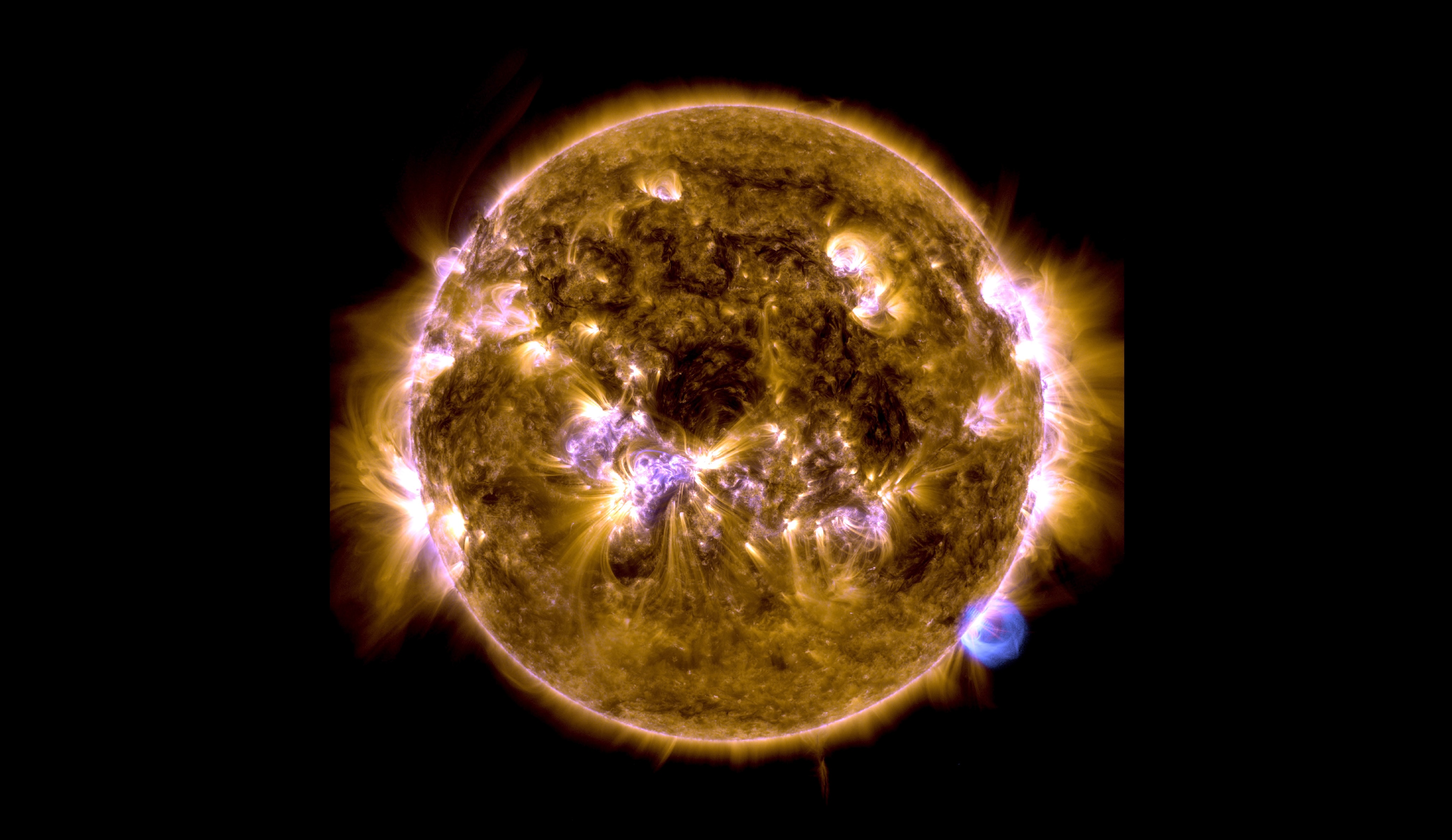NASA's Parker Solar Probe spots powerful magnetic explosion aimed at the sun's surface
NASA's Parker Solar Probe has directly observed a powerful magnetic explosion in the sun's corona that could help us predict geomagnetic storms on Earth.

While making a death-defying dive through the sun’s atmosphere, NASA's Parker Solar Probe has directly recorded a powerful plasma explosion heading toward our star’s surface in unprecedented detail.
Parker's new measurements found protons with about 1000 times greater energy than expected and a plasma jet shooting toward the sun, not away from it. Parker was uniquely positioned between the sun and the particles’ source, allowing scientists to easily figure out where they came from. These findings indicate that the complexity and strength of tangles in the sun’s magnetic field can accelerate charged particles to much greater speeds than expected from the field’s strength alone.
The sunward plasma jet was caused by "magnetic reconnection" in the sun's atmosphere — the explosive process in which magnetic fields fracture and reconnect. The powerful phenomenon transforms energy stored in the sun's magnetic field into energy that accelerates the solar wind — the constant stream of charged particles that the sun blasts across the solar system.
Understanding magnetic reconnection is critical for making better predictions about space weather, which is driven by the solar wind and other energetic outbursts from our star. Space weather is a primary suspect for what stripped away Mars' atmosphere, turning it from a habitable planet into an icy desert wasteland. On Earth, space weather can trigger geomagnetic storms that cause blackouts, damage satellites, interfere with radio and GPS signals, and even put astronauts at risk. On the bright side, it also gives Earth its signature glorious auroras.
The sun's magnetic field is extremely powerful, complex and dynamic. Space weather predictions require complicated computer simulations based on equations that describe how magnetic fields behave — but the sun is so large and convoluted that these equations will always be approximations. To improve the models' accuracy, scientists must collect extremely detailed measurements of the sun. This is where the Parker Solar Probe comes in.

The Parker Solar Probe is the first mission to fly into the sun's upper atmosphere, called the corona. It has been directly measuring magnetic fields and particles in and around the corona in unprecedented detail, providing scientific insight into the heliosphere (the sun's atmosphere, which encompasses the entire solar system in a massive, elongated bubble).
Related: NASA's daredevil solar spacecraft survives 2nd close flyby of our sun
Get the world’s most fascinating discoveries delivered straight to your inbox.
"These findings indicate that magnetic reconnection … is an important source of energetic particles in the near-Sun solar wind," lead study author Mihir Desai, director of the Southwest Research Institute's Department of Space Research, said in a statement. "Everywhere there are magnetic fields there will be magnetic reconnection. But the Sun's magnetic fields are much stronger near the star, so there's a lot more stored energy to be released."
Understanding the workings of magnetic reconnection events could help scientists better predict harmful space weather, the researchers said.
"Reports from the American Meteorological Society indicated that the powerful solar events in May 2024 wreaked havoc with farmers when extreme geomagnetic storms disrupted the precise GPS-guided navigation systems used to plant, fertilize and harvest rows of seeds, causing an estimated loss of up to $500 million in earning potential," Desai said. "Parker's access to this new data is critical, particularly as we remain in the midst of a very active solar cycle."
The latest measurements of magnetic reconnection, reported in a paper published May 29 in The Astrophysical Journal Letters, are one of many new discoveries Parker has made. In 2023, over 700 peer-reviewed scientific papers were published using data collected in the probe's first four years of operation, and there are still many more discoveries to be made. The spacecraft completed its second ultra-close flyby of the sun on March 22, zooming within 3.8 million miles (6.1 million kilometers) of the sun's surface — matching its own record from December 2024.

Damien Pine (he/him) is a freelance writer, artist, and former NASA engineer. He writes about science, physics, tech, art, and other topics with a focus on making complicated ideas accessible. He has a degree in mechanical engineering from the University of Connecticut, and he gets really excited every time he sees a cat.
You must confirm your public display name before commenting
Please logout and then login again, you will then be prompted to enter your display name.


